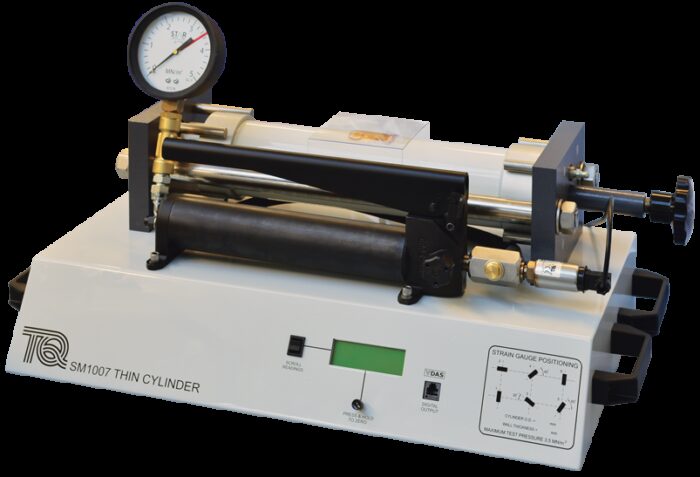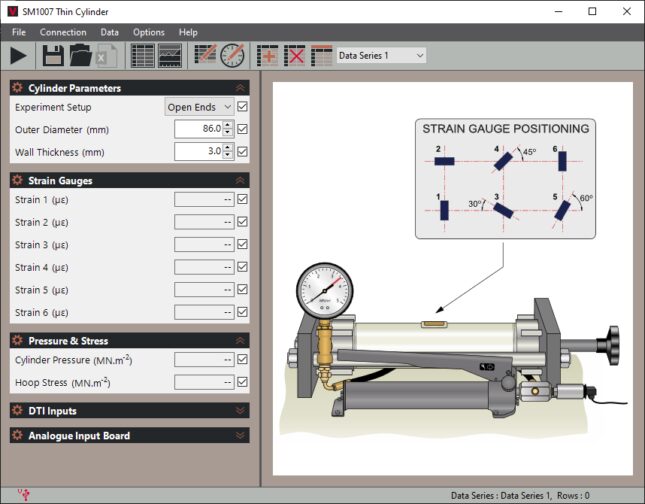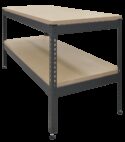Experiment
SM1007

THIN CYLINDER
A bench mounting apparatus to allow the stresses and strains of a pressurised thin walled cylinder to be investigated and analysed.
If you have any questions or you'd like to discuss a product, please call us.
+44 1159 722 611THIN CYLINDER
TecQuipment’s Thin Cylinder apparatus allows students to perform experiments that examine stress and strain in a thin-walled cylinder. It clearly shows the principles, theories and analytical techniques, and provides effective, practical support to studies.
A sturdy base contains all parts of the Thin Cylinder apparatus. This forms a compact product, ideal for use on a workbench.
The apparatus consists of a thin-walled aluminium cylinder, held in a robust frame. The frame holds the cylinder so that it is free to move along its axis. The cylinder contains oil. To stress the cylinder, students use the hydraulic handpump to pressurise the oil. Strain gauges on the cylinder surface measure strain, while a gauge and electronic sensor measure hydraulic pressure.
Students can measure strains with the cylinder in two ‘end conditions’:
- Open end: the cylinder has no axial load, so there is no direct axial stress.
or
- Closed end: the cylinder has axial loads, so there is direct axial stress.
Students use a hand-wheel on the frame to set these end conditions.
To perform experiments, students choose either closed or open-end conditions. They set the gauges to zero and use the pump to pressurise the cylinder. They take readings at several stages while they increase the pressure. The results can be taken by hand using the in-built display and pressure gauge, and results plotted by hand. Alternatively, students can use TecQuipment’s optional Versatile Data Acquisition System (VDAS®) to capture the data and plot the relevant graphs and export data. They then compare their results with calculations made using stress and strain theory.
A user guide is supplied with the Thin Cylinder apparatus. The guide includes full details of the equipment, detailed experiment procedures, theory and results.
For quick and reliable tests, TecQuipment can supply VDAS® which gives accurate real-time data capture, monitoring and display, calculation and charting of all important readings on a computer.
Learning outcomes
- Longitudinal stress, hoop (or circumferential) stress, radial stress and biaxial stress
- The behaviour of the cylinder under both open and closed-end conditions
- The use of strain gauges
- The stress strain relationship and value of Young’s modulus for the cylinder material
- Indirect strain and stress
- The value of Poisson’s ratio for the cylinder material
- The use of Mohr’s circle to calculate the shear strain at any position in the cylinder
- The use of the ‘superposition method’ to find the principal strains
- The effect of the biaxial stress system
- Sources of error in their experiments










